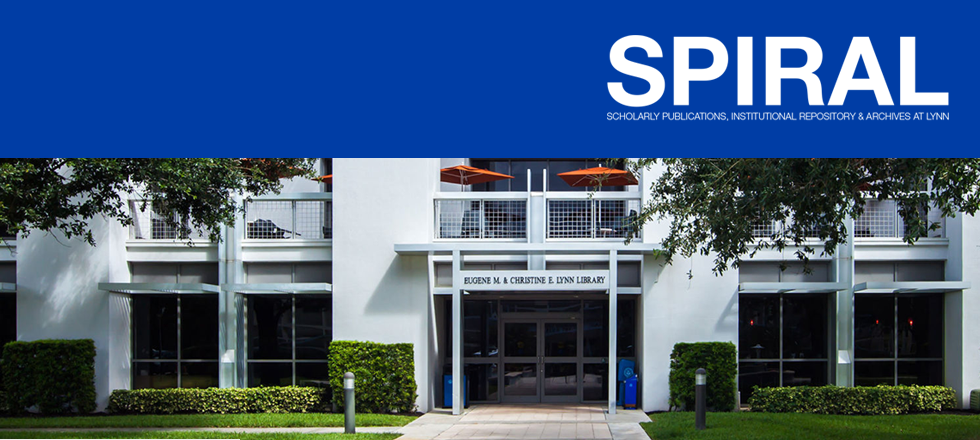Graduate Student Dissertations, Theses, Capstones, and Portfolios
Date of Award
8-2020
Document Type
Dissertation
Granting Institution
Lynn University
Degree Name
Doctor of Education (Ed.D.)
Degree Program
Educational Leadership
Department
College of Education
First Advisor
Dr. Kathleen Weigel
Second Advisor
Dr. Jennifer J. Lesh
Third Advisor
Dr. Kelly A. Burlison
Abstract
Students transitioning from elementary school to middle school can trigger emotions of enthusiasm or trepidation in students. According to the Merriam-Webster dictionary, transition means to move, pass, or change from one place, stage, or condition to another place, stage, or condition (Merriam-Webster Online, 2019). Typically, all students will experience multiple transitions throughout their lives and educational journeys. Students will transition from elementary school to middle school, middle school to high school, and from high school to college or careers. In this study middle school transition is the term used and defined as the process of changing from an elementary environment to a middle school environment (Gilewski & Nunn, 2016). Middle school may be considered as one of the most crucial transition years for students, and may pose challenges to many students who meet these tasks with varying levels of success" (Akos & Kurz, 2015). As a focus to this concern, Dillion’s (2008) study, The Transition Years, discusses the importance of creating a well-thought-out plan to ease the transitions students make, especially between two of the most critical junctures in K-12 education: the move from elementary to middle school and from middle to high school (Dillon, 2008). Even though some middle schools may have transitional activities in place for incoming sixth grade students, they do not adequately address the needs of all students during the transition process. According to Lorain (2017) most schools provide some sort of transition program for students in their final year of elementary school consisting of a parent/student night, followed by a tour of the school for students sometime in the spring (Lorain, 2017). These activities alone, even though are meaningful activities, do not address the overall needs and concerns of students and parents. An eleven or twelve-year-old, usually without much preparation, is entering into a school culture of student independence, fast paced, and a greater academic challenge. It should 3 be considered that during this time of transitioning to a new environment, students are also changing hormonally, mentally and physically (Gilewski & Nunn, 2016). Fifth grade students are transitioning from a highly organized and nurturing configuration to an environment with less structure, more impersonal, more social, and competitive academically (Akos, 2002). Because of this environmental change, entering middle school may not appear to be a fresh start for some students. After a summer of social media and smartphones, students may have mixed feelings of excitement and anxiety. Students may have seen their classmates posting photos from summer hangouts that they weren’t invited to, or were not allowed to play a part in. Because students are able to see everything via social media. The feeling of exclusion may trigger certain emotions in students. Unfortunately, the anxiety of not being included is even stronger today (Kelly, 2018). Making the interchange from the traditional pre-school orientation programs to a comprehensive transitional program may help address these concerns and foster a more fluid transition for students.
Because some students mature faster than others, those developmentally behind will typically experience more stress than their peers and may require more support to assist with procedural and academic transition (Gilewski & Nunn, 2016). These challenges impact student academic achievement and increases anxiety. Research has revealed that students’ experience difficulties developmentally and academically during the transition process. Akos’ (2002) study proposes that even though declines are not gender exclusive, boys tend to show a significant drop in academic achievement, while girls seem to experience a greater level of psychological distress after transition (Akos, 2002). In both genders, transitioning has the susceptibility to effect student motivation and attitudes toward school. “While students experience other “transitions” during their educational journey, such as advancing from one grade level to the next, the three major transition points are of particular focus of educators and school reformers because transitioning students often experience significant academic, social, emotional, physical, or developmental changes that may adversely affect their educational performance (The Great Schools Partnership, 2013).
The purpose of this study was to provide a structure for the interrelated research conducted on the pressing need to address the concerns of middle school transition. This chapter provides background information of the problem that warrants the need to research this topic. This study compiled and analyzed data regarding the effectiveness of implementing a comprehensive transitional program to help students become acclimated to middle school. Also, this study delineates a framework to assist middle school leaders in establishing an environment that is more conducive for students transitioning from elementary to middle school.
Recommended Citation
Gregory, Y. E. (2020). The Significance of Employing a Comprehensive Transitional Program for Sixth Grade and its Effects on Student Anxiety and Performance [Doctoral dissertation, Lynn University]. SPIRAL. https://spiral.lynn.edu/etds/361




Comments
To protect privacy and copyright, this dissertation may have been edited to redact pages, personal information, and/or signatures. For a complete, unedited version of the volume, please contact the University Archives.